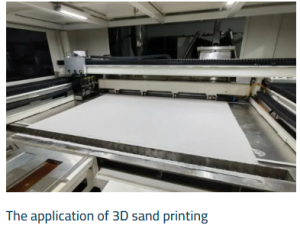Understanding Your Prototyping Requirements: Strength, Endurance, And Connectivity
Production of any metal prototype:- Choosing the right metal while going on with metal prototyping set the tone for its end performance, cost, and production process. Metals have diverse properties including strength, weight, corrosion resistance, and thermal conductivity and it is thus important that designers property match the material to its end use in the prototype.
So you can imagine how your prototype will be used,
Material Type is Driven by Functionality
Choosing the right metal for your prototype then becomes a matter of considering that type of requirements of the final product. For example, if the prototype is subjected to extreme temperatures or corrosive environments, metal materials like stainless steel or titanium are preferred because of their heat and corrosion resistance. On the other hand, if your main concern is electrical conductivity, copper would be a great option as it has outstanding conductive characteristics.
Summary Of Cost And Performance Trade-Off
The Role of Economic Factors in Material Selection
Here cost is one of the major factors in prototype development. Aluminum and steel are less money and more widely available so they are a good choice for making them on a larger scale or for a lower budget project. On the other hand, metals that are more exotic such as titanium or nickel alloys are more expensive, but may have superior properties that are vital for certain applications such as aerospace or medical devices.

The Basics Of How Metal Works
Weight and strength considerations
In the context of metal evaluation, it is imperative to keep in mind the ratio between Weight and Strength. For example, aluminum is selected for its lightweight and high strength properties as well as its application to the automotive and aerospace industries where weight reduction is often the top priority. Steel, especially high-strength alloys, for higher strength and durability, robustness but significantly heavier and QurMeTa alleges more difficult to manufacture forged designs.
Machining Ability and Manufacturability
Ease of Production
A metal's manufacturability determines how easy or challenging it is to machine, form, or weld, which impacts the prototyping timeline and complexity. Aluminum also possesses superb machinability and formability, helping to streamline manufacturing and lower costs. On the other hand, metals that are tougher-like stainless steel-take more time and resources from a machine to work, meaning longer production times and higher production costs.
Prototyping for Scalability Future
Planning for Mass Production
In your metal selection process for your prototype, you should also consider future production scalability. This can simplify the transition from prototype to full-scale production by enabling easy machine-ability and are widely available metals. This accommodates that while prototyping tests the design, it also leads a clear pathway for production that ensures minimal disruption in sourcing materials and for that matter the manufacturing process.
Closing Statement: Strategy in Metal Sourcing
The choice of metal for your prototype is a strategic decision that has an impact on both the immediate performance of the prototype and the ability to produce it in quantity, and at a reasonable cost, later. With these metrics in mind, developers can avoid creating unnecessary prototypes, utilize cost effectively materials with the right properties for the job at hand and make development decisions based on the end use of the product of which the prototype is only a part — saving precious resources for when they most need it at the end-stage of the product development process and the launch phase.